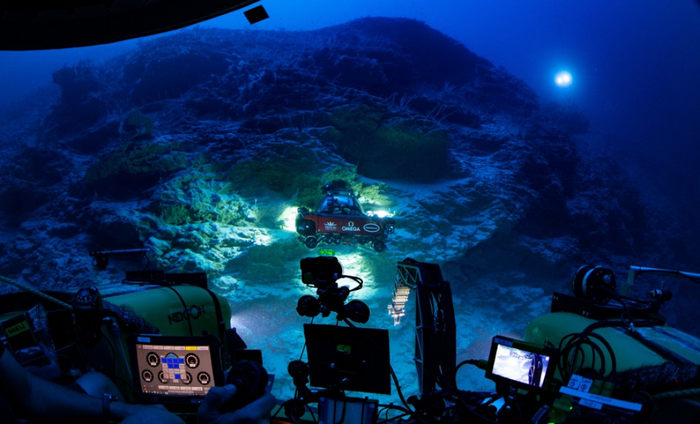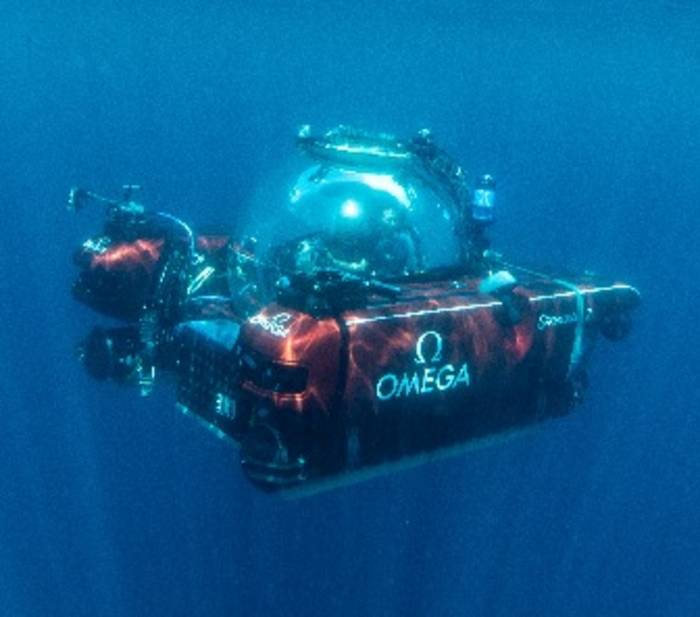A group of aquanauts has discovered an oasis of ocean life in the depths of Maldive's ocean hidden in a vast watery desert, according to a report by ScienceAlert.
A recent submarine expedition around a seamount in the archipelago's deep waters has uncovered a brand-new, flourishing ecosystem that scientists say has never been seen before.

The Trapping Zone
The aquanauts have called the underwater ecosystem "The Trapping Zone": a 500-meter-deep (1,640 ft) where enormous fish assemble to gorge themselves on microscopic nekton.
Similar to zooplankton but significantly bigger, micronekton range in size from 2 to 20 centimeters (up to 7 inches).
Each day and night, as larger fish follow them in search of food, these small animals actively migrate between the ocean's surface and water a kilometer deep, generating a vertical wave of migration.
The Nekton Maldives Mission is the first expedition to comprehensively map the deep seas of the Maldives, a group of 26 coral atolls southwest of Sri Lanka and India was studied in the mission.
The exploration is a collaboration between researchers at the University of Oxford, the Government of the Maldives, and the nonprofit research institute Nekton Maldives Mission.
Based on the movement of micronekton, the team has also discovered a novel ecosystem encircling the deep-sea mountain known as "Satho Rahaa."
Each day as the sun rises, these minuscule organisms start to swim downward from the surface. However, near the submerged seamount, fossilized carbonate reefs and underwater volcanic ridges formed 60 million years ago have prevented micronekton from diving deeper than about 500 meters, as per ScienceAlert.
The creatures are trapped by the geography and turn into "sitting ducks" for larger predators, including schools of tuna, voracious sharks, and other deepwater fish that live in the zone- such as spiky Oreos, alfonsinos, and dogfish.
Aquanauts, on the voyage, observed a swarming ecosystem of predators and prey engaged in combat from a glass-bubble submarine known as the Omega Seamaster II.

Oasis of Life
The team also witnessed a huge variety of fish, such as gill sharks, gulper sharks, silky sharks, sand tiger sharks, gulper scalloped hammerhead sharks, and even bramble sharks, which are considered to be rare in the wild.
Scientists might learn a lot more about these understudied species thanks to the trapping zone recently discovered in the Maldives, which might lead to improved ocean conservation methods.
According to marine researcher Alex Rogers from the University of Oxford, the zone has all the characteristics of a "distinct new ecosystem."
"The Trapping Zone is creating an oasis of life in the Maldives and it is highly likely to exist in other oceanic islands and also on the slopes of continents," Rogers said in a statement.
However, current climate assessments indicate that some micronekton, such as krill in Antarctica, are not adapting well to the global warming situation, which continues to threaten oceanic ecosystems.
This article is owned by Tech Times
Written by Joaquin Victor Tacla
ⓒ 2025 TECHTIMES.com All rights reserved. Do not reproduce without permission.




